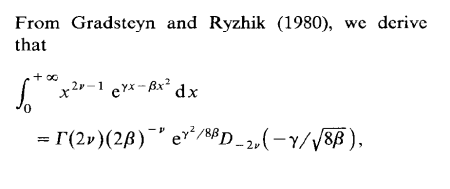
As a reading suggestion for my (last) OxWaSP Bayesian course at Oxford, I included the classic 1973 Marginalisation paradoxes by Phil Dawid, Mervyn Stone [whom I met when visiting UCL in 1992 since he was sharing an office with my friend Costas Goutis], and Jim Zidek. Paper that also appears in my (recent) slides as an exercise. And has been discussed many times on this ‘Og.
Reading the paper in the train to Oxford was quite pleasant, with a few discoveries like an interesting pike at Fraser’s structural (crypto-fiducial?!) distributions that “do not need Bayesian improper priors to fall into the same paradoxes”. And a most fascinating if surprising inclusion of the Box-Müller random generator in an argument, something of a precursor to perfect sampling (?). And a clear declaration that (right-Haar) invariant priors are at the source of the resolution of the paradox. With a much less clear notion of “un-Bayesian priors” as those leading to a paradox. Especially when the authors exhibit a red herring where the paradox cannot disappear, no matter what the prior is. Rich discussion (with none of the current 400 word length constraint), including the suggestion of neutral points, namely those that do identify a posterior, whatever that means. Funny conclusion, as well:
“In Stone and Dawid’s Biometrika paper, B1 promised never to use improper priors again. That resolution was short-lived and let us hope that these two blinkered Bayesians will find a way out of their present confusion and make another comeback.” D.J. Bartholomew (LSE)
and another
“An eminent Oxford statistician with decidedly mathematical inclinations once remarked to me that he was in favour of Bayesian theory because it made statisticians learn about Haar measure.” A.D. McLaren (Glasgow)
and yet another
“The fundamentals of statistical inference lie beneath a sea of mathematics and scientific opinion that is polluted with red herrings, not all spawned by Bayesians of course.” G.N. Wilkinson (Rothamsted Station)
Lindley’s discussion is more serious if not unkind. Dennis Lindley essentially follows the lead of the authors to conclude that “improper priors must go”. To the point of retracting what was written in his book! Although concluding about the consequences for standard statistics, since they allow for admissible procedures that are associated with improper priors. If the later must go, the former must go as well!!! (A bit of sophistry involved in this argument…) Efron’s point is more constructive in this regard since he recalls the dangers of using proper priors with huge variance. And the little hope one can hold about having a prior that is uninformative in every dimension. (A point much more blatantly expressed by Dickey mocking “magic unique prior distributions”.) And Dempster points out even more clearly that the fundamental difficulty with these paradoxes is that the prior marginal does not exist. Don Fraser may be the most brutal discussant of all, stating that the paradoxes are not new and that “the conclusions are erroneous or unfounded”. Also complaining about Lindley’s review of his book [suggesting prior integration could save the day] in Biometrika, where he was not allowed a rejoinder. It reflects on the then intense opposition between Bayesians and fiducialist Fisherians. (Funny enough, given the place of these marginalisation paradoxes in his book, I was mistakenly convinced that Jaynes was one of the discussants of this historical paper. He is mentioned in the reply by the authors.)




